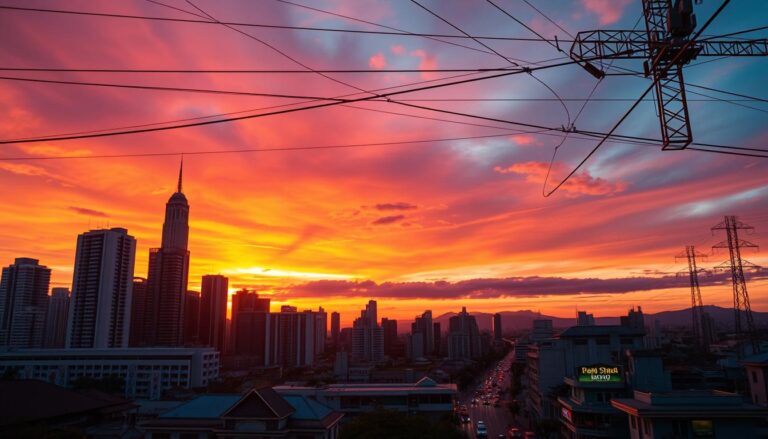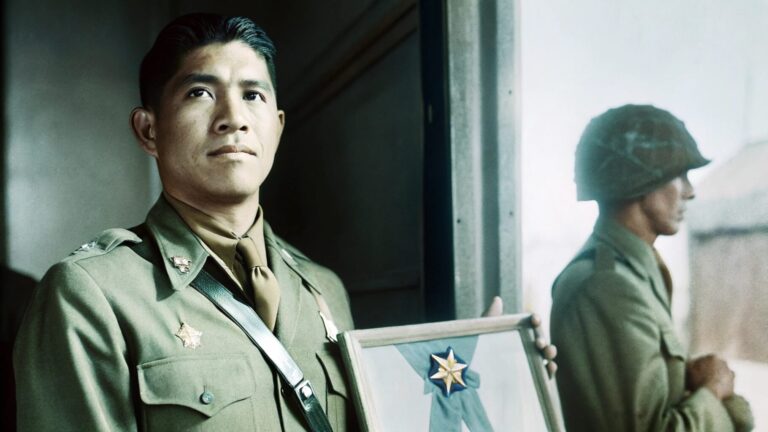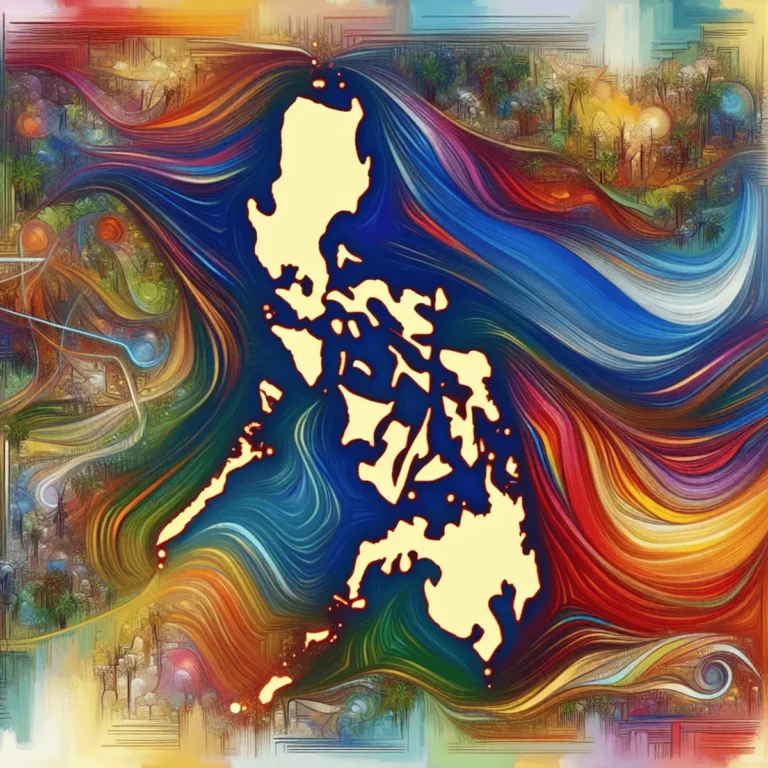The Philippine Revolution: A Fight for Freedom

Did you know the Philippine Revolution started in 1896? It was a fight for freedom that ended with the country’s independence on June 12, 1898. For over 300 years, the Philippines was ruled by Spain. This revolution was a key moment in the country’s history, showing the weaknesses of Spanish rule.
Leaders like Andrés Bonifacio and Emilio Aguinaldo drove the vision of freedom. But, the fight for freedom didn’t end there. The Philippines soon found itself under American control.
This article explores the complex history of the Philippine Revolution. It looks at the rise of the Ilustrados, the leadership, and the declaration of independence. Yet, even with victory over Spain, the quest for true self-governance continued. This led to the Philippine-American War and its lasting effects.
Key Takeaways
- The Philippine Revolution was a crucial struggle for independence from Spanish rule.
- Notable leaders included Andrés Bonifacio and Emilio Aguinaldo, who shaped the movement for freedom.
- The revolution concluded with the Philippine Declaration of Independence on June 12, 1898.
- America’s eventual involvement shifted the dynamics of independence efforts and led to the Philippine-American War.
- The revolution had significant cultural and political ramifications for the Philippines.
Introduction to the Philippine Revolution
The Philippine Revolution was a key moment in the Philippines’ history. It sparked a fight for freedom. This fight was fueled by years of Spanish rule and a growing desire for self-rule.
Passionate people and groups started to organize. They wanted to free their country and create a national identity.
The revolution happened from 1896 to 1899. It was marked by courage and determination. It led to the First Philippine Republic and changed the nation.
The conflict had big social effects. The Katipunan had 100,000 to 400,000 members in 1896. This showed a wide support for change.
The Spanish forces, with 12,700 to 17,700 troops, tried to stop the uprising. But the Filipino side kept going, showing great resilience and hope.
| Key Statistics of the Philippine Revolution | Filipino Forces | Spanish Forces |
|---|---|---|
| Number of Members in the Katipunan (1896) | 100,000 – 400,000 | N/A |
| Troop Strength | Estimated up to 400,000 | 12,700 – 17,700 |
| Filipino Losses | 28,646 dead or dead from wounds | Heavy casualties primarily due to disease |
| Duration of the Revolution | 2 years and 5 months | N/A |
Through this revolution, Filipinos wanted to free their country. They also wanted to unite and inspire future generations. This fight for identity and self-governance shaped the Philippines.
Historical Context of Spanish Colonial Rule
The Spanish rule in the Philippines had a huge impact on history. It lasted from 1565 to the late 19th century, over 300 years. During this time, Filipinos faced many restrictions on their freedom. This led to a lot of resentment.
The social structure under Spanish rule created big economic gaps. These gaps made tensions in Filipino society worse.
The first Spanish settlement was in Cebu, starting a new era. The galleon trade connected Manila to Acapulco, Mexico. Manila became a key commercial center, attracting many Chinese.
The Spanish had a strong leader, the governor-general, who had almost royal power. This leader controlled the economy and local governments.
The Spanish clergy worked hard to convert Filipinos to Christianity. They suppressed local religions. The church’s power grew, affecting society and politics.
The encomienda system was used early on but was often abused. Later, the church helped with farming, but not everyone benefited equally. This created class differences.
Events like the execution of three priests in 1872 showed the harshness of rule. This event sparked a desire for freedom. It led to the rise of a middle class and the start of the Philippine Revolution.
Emergence of the Ilustrados
The Ilustrados were a group of educated Filipinos who emerged in the late 19th century. They were mainly from the middle to upper classes. They were educated in European institutions, especially in Spain.
This group played a big role in pushing for reforms and supporting the Philippine Revolution. They wanted to change the oppressive Spanish colonial rule.
Notable Ilustrados included Graciano López Jaena, Marcelo H. del Pilar, Mariano Ponce, Antonio Luna, and José Rizal. They spoke out for their fellow Filipinos, demanding more political power. They wanted representation in the Spanish Cortes and the secularization of parishes.
José Rizal was a key figure among the Ilustrados. His novels, Noli Me Tangere and El Filibusterismo, highlighted the injustices under colonial rule. These works sparked a sense of nationalism among readers, fueling the fight for independence.
After the execution of three Filipino priests in 1872, the Ilustrados joined forces with Andrés Bonifacio and the Katipunan. This marked a significant shift in the fight for freedom. The nationalist sentiment grew stronger, showing the educated class’s crucial role in the revolution.
The United States’ policies during this time further solidified the Ilustrados’ position in society. They became key in pushing for social reforms and true independence. They emerged as the leading intellectual force in the Philippine Revolution.
| Ilustrado | Role/Contribution | Key Works |
|---|---|---|
| José Rizal | National hero who promoted education and reforms | Noli Me Tangere, El Filibusterismo |
| Graciano López Jaena | Key figure in the Propaganda Movement | La Solidaridad (editor) |
| Marcelo H. del Pilar | Activist promoting Filipino nationalism | Dyaryong Tagalog (newspaper) |
| Antonio Luna | Military strategist; contributed to the revolutionary efforts | Various writings on military tactics |
| Mariano Ponce | Advocate for reforms through journalism | Various publications |
The Cavite Mutiny: A Prelude to Revolution
The Cavite Mutiny on January 20, 1872, was a key moment in the Philippines’ history. It sparked a fight against Spanish rule. This uprising at Fort San Felipe in Cavite showed growing discontent among Filipinos.
About 200 Filipino soldiers and workers fought against Spanish forces. The Spanish had one regiment and four cannons. Though the uprising was short, the Spanish won.
After the mutiny, the Spanish took harsh actions. They disarmed many Filipino soldiers and exiled those seen as rebels. Three priests, known as Gomburza, were brutally executed on February 17, 1872.
Forty-one people were sentenced to death by Governor-General Izquierdo. Many were imprisoned or sent to Guam and the Mariana Islands. The execution of Gomburza made him a martyr in the eyes of many Filipinos.
The Cavite Mutiny’s details are still debated. Figures like Jose Montero y Vidal and Edmond Plauchut have different stories. Montero said the priests were part of a big plot, while Plauchut defended them. This shows how complex and disputed the event’s history is.
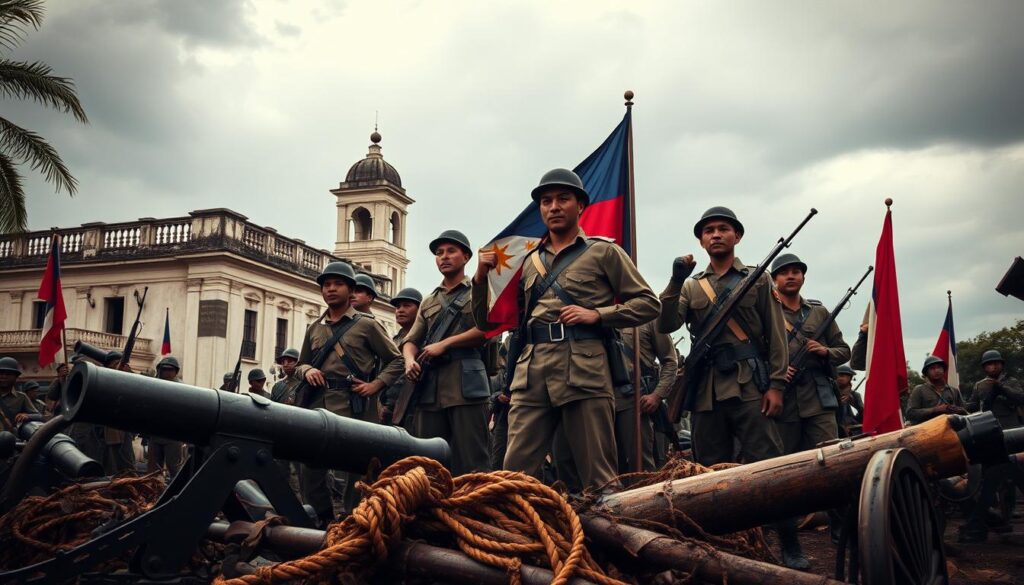
The Cavite Mutiny’s impact was felt across the Philippines. It inspired future uprisings. As more Filipinos learned from this event, the desire for freedom grew. This eventually led to a full rebellion against Spain by 1896.
| Event | Date | Location | Outcome |
|---|---|---|---|
| Cavite Mutiny | January 20, 1872 | Fort San Felipe, Cavite | Spanish victory; executions and exiles followed |
| Execution of Gomburza | February 17, 1872 | Luneta | Martyrdom fueling anti-Spanish sentiment |
| Philippine Revolution Begins | August 26, 1896 | Various provinces | Commencement of broader rebellion against Spanish rule |
Formation of the Katipunan
The Katipunan, also known as the Kataastaasang Kagalanggalangang Katipunan ng mga Anak ng Bayan, was key in the Philippine Revolution. It was founded on July 7, 1892, by Filipino leaders like Andres Bonifacio. This group became a major force against Spanish rule, aiming to unite Filipinos for freedom.
Andres Bonifacio’s Leadership
Andres Bonifacio was the main leader of the Katipunan. He was dedicated to making the Philippines independent. His vision was to unite Filipinos against their oppressors.
Bonifacio’s approach was direct and practical. He led the Katipunan in its early days, setting up structures for its growth across the Philippines.
Ideals and Goals of the Katipunan
The Katipunan aimed to end Spanish rule and create a free nation. It stood for equality, justice, and freedom. The group believed in the importance of education and unity among Filipinos.
These values inspired members to join the fight for independence. They set the stage for the Philippines’ quest for freedom.
Key Figures of the Philippine Revolution
The Philippine Revolution had key leaders who shaped the fight for freedom. Emilio Aguinaldo and José Rizal were among them. They left a big mark on the revolution and the country.
Emilio Aguinaldo: A Rising Leader
Emilio Aguinaldo became a key leader after Andres Bonifacio. He showed great skill in battles against the Spanish, winning important victories. The Katipunan, with 100,000 members by August 1896, grew under his leadership.
Aguinaldo declared independence on June 12, 1898. This was a key moment, but the Americans soon got involved. His leadership is crucial to understanding the revolution.
José Rizal: The National Hero
José Rizal is seen as a national hero. He started by pushing for reforms, not revolution. But his writings sparked a desire for freedom among Filipinos.
Rizal’s death in 1896 rallied more people to the cause. His ideas on equality and justice were key to the movement. His writing shows how ideas can drive change and unite people.
Spanish Reaction to the Revolution
The Spanish reaction to the Philippine Revolution in the late 19th century was marked by a wave of repression. They tried to keep control over the rebellious colonies. As the revolution grew, the Spanish put in place martial law.
This led to a big campaign of surveillance and arrests. They aimed to find and detain suspected revolutionaries. Many Filipino leaders faced big risks, with some being detained to stop the movement.
The Spanish found it hard to manage the uprising. This showed they couldn’t keep up with the changing resistance. The situation got worse, showing how weak the Spanish colonial government was.
The fall of Barcelona to Filipino forces was a clear sign of Spanish losing control. It showed the need for change or a new look at colonial policies.
Key points in the Spanish reaction included:
- Increased arrests of suspected revolutionaries, leading to widespread fear among revolution supporters.
- Implementation of martial law across the affected regions, creating an atmosphere of oppression.
- Failure to effectively quell uprisings, signaling a shift in power dynamics between colonizers and the colonized.
- Recognized need for reform as the revolution advanced, showcasing a disconnect in colonial governance.
This part of the Spanish response shows the challenges of colonial rule. The Spanish Empire was struggling to keep its grip on the Philippines. As the revolution grew stronger, it was clear that the Spanish actions were not enough to stop the Filipino desire for freedom.
The Outbreak of the Armed Struggle
The Philippine Revolution was a turning point for the nation. It moved from discontent to armed struggle against colonial rule. This fight started in August 1896 when the Spanish found the Katipunan group.
This event sparked a series of battles. Revolutionaries used new tactics to fight the Spanish military. Their actions showed their determination to resist.
Initial Battles and Tactics
The early battles were key in the Philippine Revolution. The Battle of San Juan del Monte showed the Filipino fighters’ will to resist. They used guerrilla tactics to fight against the Spanish.
Their creativity and resourcefulness were clear. These early battles set the stage for ongoing resistance against colonial rule.
Significance of the Battle of Manila
The Battle of Manila was a major fight in the Philippine Revolution. It tested the Filipino forces’ resolve and showed the capital’s importance. Manila’s defense showed the revolutionaries’ strength against colonial rule.
These battles also drew support from locals and international observers. They changed how people saw the fight for independence.
The Manila battles were a turning point. They showed hope and resilience in the face of adversity. Understanding these battles shows the spirit of the armed struggle. It highlights the importance of unity and determination in the quest for freedom.
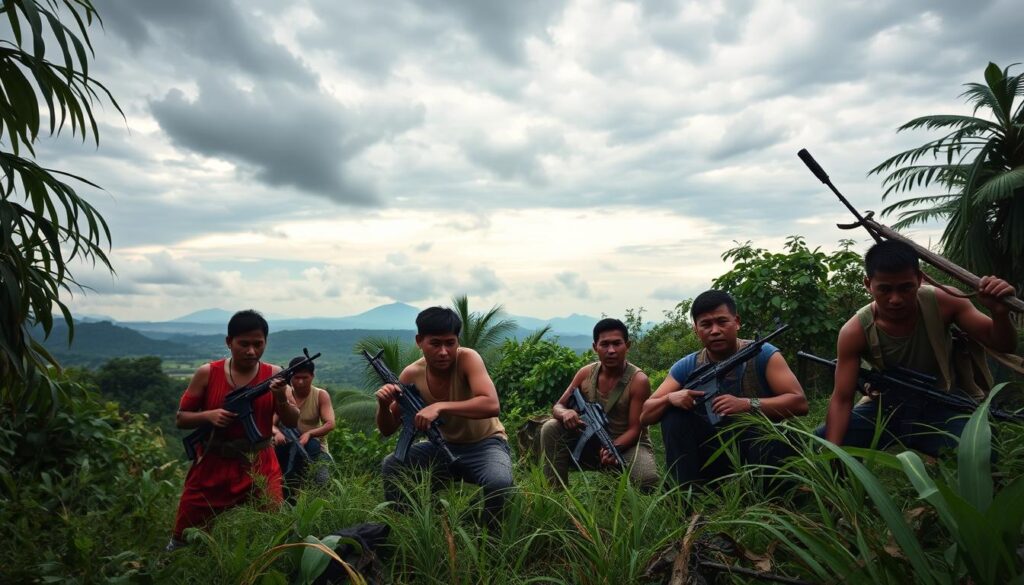
| Battle | Date | Outcome | Tactics Used |
|---|---|---|---|
| Battle of San Juan del Monte | August 1896 | Filipino victory | Guerrilla tactics, ambushes |
| Battle of Manila | February 1898 | Filipino initial success | Strategic positioning, surprise attacks |
| Battle of Caloocan | February 1897 | Spanish victory | Conventional warfare, reinforcements |
Leadership Changes and Internal Conflicts
The Philippine Revolution faced big challenges due to internal conflicts. The rivalry between Andres Bonifacio and Emilio Aguinaldo was a key issue. This struggle affected the movement’s progress and unity.
Bonifacio vs. Aguinaldo
The elections at Tejeros in March 1897 caused deep divisions. Aguinaldo’s win as president sparked a bitter dispute. Bonifacio questioned the election’s legitimacy, showing deep tensions in the leadership.
This clash was more than a simple rivalry. It showed the deep-seated issues in the revolution’s leadership. The conflict between these two leaders eventually led to a breakdown in their relationship.
Impact of Leadership Struggles
Leadership struggles had a big impact on the revolution. The disagreements weakened the organization, making it easier for Spanish forces to attack. This weakened the revolutionaries’ morale and unity.
The effects were seen in both military battles and the political landscape of the time. The leadership struggles hindered the revolution’s progress towards independence.
| Factors | Bonifacio’s Approach | Aguinaldo’s Approach |
|---|---|---|
| Leadership Style | Charismatic, revolutionary | Strategic, diplomatic |
| View on Governance | Popular assembly and mass mobilization | Centralized power |
| Reputation | Hero of the masses | Strategist and tactician |
| Outcome of Conflict | Arrest and execution | Consolidation of power |
Pact of Biak-na-Bato: Temporary Respite
The Pact of Biak-na-Bato was signed on December 14, 1897. It was a key moment in the Philippine Revolution. It led to a short truce between Filipino fighters and Spanish authorities.
Emilio Aguinaldo and his team agreed to leave for Hong Kong. Spain promised to make changes and pay 800,000 pesos for the weapons. But, neither side kept their promises, making the pact unreliable.
Many saw the Pact of Biak-na-Bato as a smart move. It gave the revolutionaries a chance to rest and plan better. This pact showed the Filipinos’ strong desire for freedom.

But, the truce didn’t last. Spain didn’t keep its word, especially about the money. This made the Filipinos even more determined. They declared independence on June 12, 1898, showing their unwavering spirit.
Philippine Declaration of Independence
On June 12, 1898, a big change happened in the Philippines. Emilio Aguinaldo declared the Philippine Declaration of Independence from Spain in Kawit, Cavite. This was a historic moment for Filipinos, showing their wish for freedom after 300 years of rule by others. The declaration was written by Ambrosio Rianzares Bautista, showing the deep desire for Philippine independence after years of fighting.
June 12, 1898: A Historic Moment
The declaration was made at General Emilio Aguinaldo’s home, between four and five in the afternoon. It was signed by 98 delegates and approved by 190 local leaders from 16 provinces. This showed the strong will of the Filipino fighters. Aguinaldo brought together different groups, showing their shared wish for freedom.
The Act of the Declaration was first written in Spanish. It was the result of a growing fight for freedom, sparked by the Cavite Mutiny and the Katipunan’s rise.
International Reactions
The Philippine Declaration of Independence got mixed international reactions. It deeply moved the Filipino people but was doubted by Spain and the U.S. Spain didn’t accept the new state, and the U.S. had its own plans for the area. The world’s politics made it hard for the Philippines to be recognized as independent.
Consequences of the Spanish-American War
The Spanish-American War was a turning point in history. It ended Spanish rule in the Philippines suddenly. The war led to the Philippines, Puerto Rico, and Guam becoming part of the United States. This change had a big impact on the political and social life of the Philippines.
The war’s effects went beyond just changing who ruled the land. It also affected the dreams of Filipinos for true freedom.
From Spanish Control to American Rule
The shift from Spanish to American rule changed the Philippines’ path. Filipinos, who had fought hard against Spain, faced a new power. The Treaty of Paris, signed in December 1898, ended the war and sold the Philippines to the U.S. for $20 million.
This new rule did not meet the dreams of freedom that many had hoped for.
Under U.S. rule, a military system was set up to control the islands and stop any resistance. The U.S. tried to mix military control with building a civil government. This was both a challenge and an opportunity for Filipinos.
The war’s effects created a new reality for Filipinos. Their fight against Spanish rule turned into a battle against American power. As you explore this history, think about how the hopes for freedom were lost in the complex power struggles of American rule.
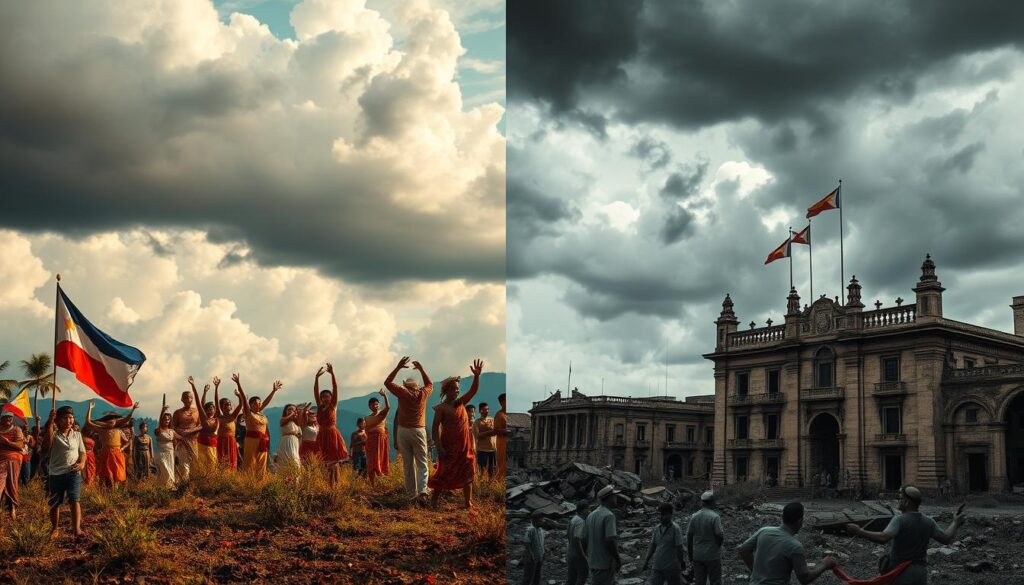
The Philippine-American War: A New Struggle
The Philippine-American War started on February 4, 1899, and ended on July 4, 1902. It was a fight for the Filipino people against American rule. After the Spanish-American War, Filipinos wanted true freedom but faced a brutal fight instead.
Filipino fighters battled American forces, hoping to keep their country free. The war was fierce, with many lives lost on both sides. About 20,000 Filipino fighters and 4,200 American soldiers died. Civilians suffered even more, with 200,000 to 250,000 deaths from hunger, sickness, and violence.
The war saw the use of guerrilla tactics by Filipino forces. They used hit-and-run attacks, making the war long and showing their will to resist. The war’s brutality sparked debates in the U.S. about the rightness of American rule.
| Aspect | Statistics |
|---|---|
| Duration of Conflict | 3 years, 2 months, 1 week, and 5 days |
| Estimated Filipino Casualties | 20,000 fighters |
| Estimated American Casualties | 4,200 soldiers |
| Civilian Deaths | 200,000 to 250,000 |
| Next Phase (Moro Rebellion) | May 2, 1902 – June 15, 1913 |
The Philippine-American War changed the Philippines’ politics and foreshadowed American rule’s challenges. This period in history is still important today, offering lessons on the Philippines’ path to freedom.
Lasting Effects of the Philippine Revolution
The Philippine Revolution brought about big changes. It had a lasting impact on culture and politics. This revolution helped shape a national identity and sparked movements for social justice.
It inspired future generations to fight for equality and national rights. This shows how the desire for freedom is deeply rooted in Filipino culture.
Cultural and Political Ramifications
The revolution boosted national pride among Filipinos. It created a shared history and sense of struggle. Education became key, with a focus on nationalistic themes.
After the revolution, politics changed a lot. For example, more people ran for office, showing a strong desire for representation. This was a big change in political engagement.
Land reform and economic growth were also key. Organizations like F.R.E.E. Management Corporation worked to revive businesses and improve agriculture. In Mindanao, agricultural output even increased by 5% due to peace.
The revolution also brought hope and changed attitudes. Events like the People Power Revolution showed the power of grassroots movements. However, challenges remain, like dealing with politicians from the Marcos era.
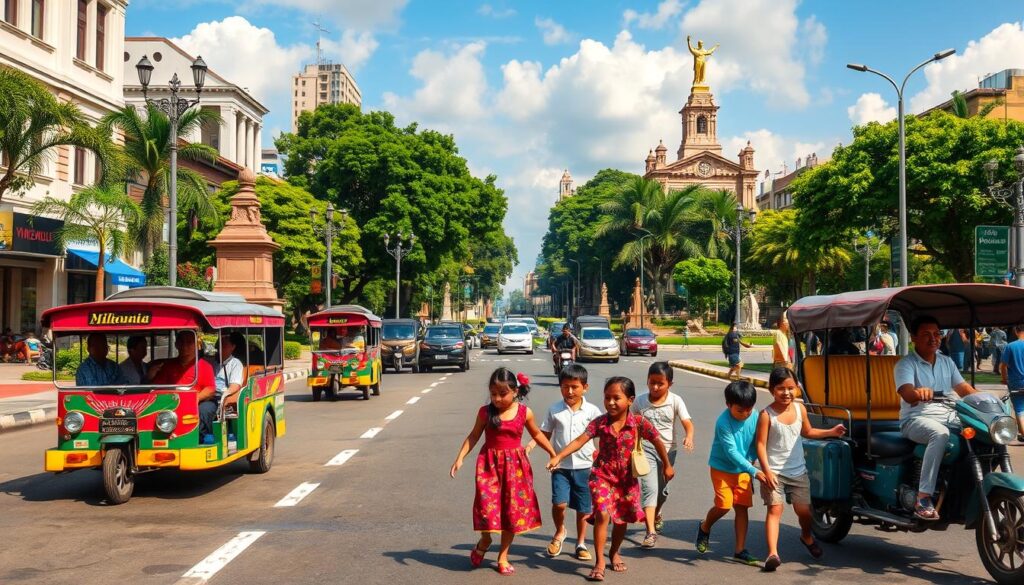
| Impact Area | Details | Statistics |
|---|---|---|
| Agriculture | Increase in agricultural output due to stability post-conflict. | 5% increase in Mindanao |
| Political Engagement | Rise in candidates representing democratic values. | 20 candidates for a single office |
| Social Justice Movements | Efforts for land reform faced challenges from lobbyists. | High tension and strong opposition |
| Historical Legacy | Influence of the People Power Revolution on future activism. | Uncertain legacy since 1986 |
The Philippines is still changing, with the revolution’s effects still felt today. Understanding these changes gives us a deeper look at the country’s ongoing journey towards freedom and good governance.
Legacy of the Philippine Revolution
The Philippine Revolution’s legacy is a key part of the Philippines’ national identity. It was a crucial fight against colonial rule. It also inspired future battles for freedom and against tyranny.
Leaders like José Rizal and Andrés Bonifacio sparked the revolution. Rizal’s book, Noli Me Tangere, symbolized resistance against colonial rule. His work, banned but widely read, showed Filipinos’ desire for freedom.
The sacrifices made during the revolution are still remembered today. The declaration of independence on June 12, 1898, is celebrated every year. This legacy has shaped what it means to be Filipino, creating a strong sense of community.
| Milestone | Date |
|---|---|
| Declaration of Independence from Spain | June 12, 1898 |
| Independence Day changed to June 12 | 1962 |
| 125th Anniversary of Philippine Independence | June 12, 2023 |
Conclusion
The Philippine Revolution was a key moment in the country’s fight for freedom. It brought together different groups under strong leaders. This showed the Filipino people’s strong will for liberty.
This struggle laid the groundwork for the country’s independence. It also inspired future generations to keep fighting for their rights.
The revolution was more than just a fight for freedom. It taught us about staying strong and finding our identity. These lessons are still important today.
The legacy of the revolution is still felt today. It shapes our views on national pride and unity. It also reminds us of the ongoing battle against oppression.
The story of the Philippine Revolution is a powerful reminder of the nation’s spirit. It shows how freedom, culture, and history are all connected. It also honors those who fought for a better future.


